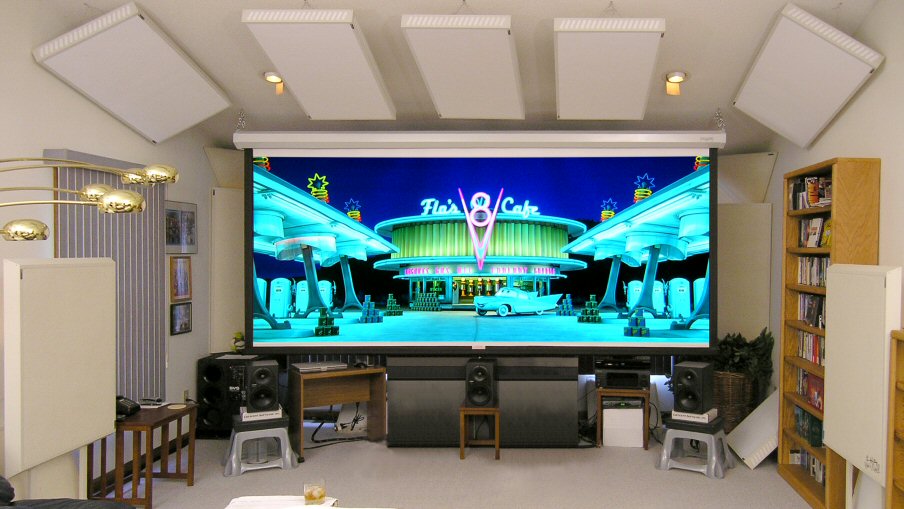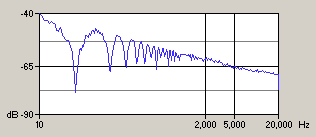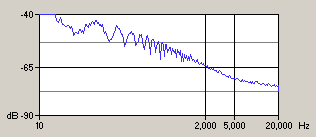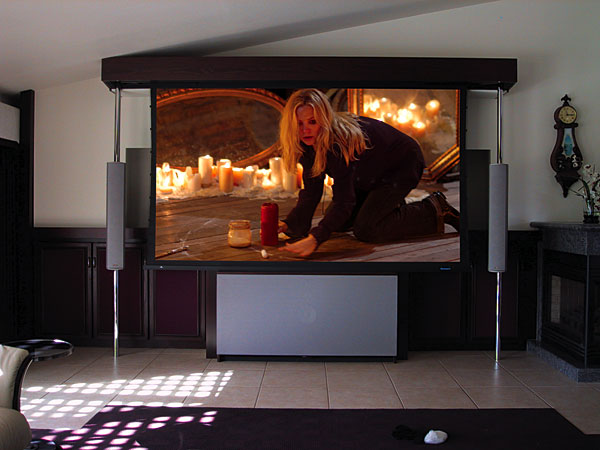| This article is meant mainly as a rebuttal to those who believe
that early reflections enhance sound quality in a typical home-sized listening room. By
"home-sized" I mean a room less than about 20 feet wide, where reflections from
nearby surfaces arrive soon after the direct sound from the loudspeakers. I assume most
readers already know about early reflections and reflection points, but
if not, this RFZ Article on the
RealTraps web site explains in detail. One proponent in favor of early
reflections is loudspeaker expert Dr. Floyd Toole, whose 2008 book "Sound
Reproduction" has been deservedly well received. I'll address Dr. Toole's position
later on. Some audiophiles believe that reflections in a listening room enhance spaciousness. On the surface this seems plausible, though it's incorrect for home-size rooms. The ambience and reverb contained in many recordings is that of a large space - a concert hall, a movie scoring sound stage, or an equivalent space created with artificial reverb. But when played back in a small untreated room, the strong early reflections from nearby surfaces drown out the larger sounding reverb in the recording. This makes the music sound smaller and narrower, not larger and wider. As proof, headphones are fully anechoic having no reflections, yet music generally sounds larger on headphones than through loudspeakers. The most common way to remove early reflections is by placing absorbers at the reflection points. In professional control rooms where music and movie sound tracks are mixed, it's a de facto standard to treat all nearby room surfaces with absorption to eliminate early reflections. The loss of clarity caused by early reflections occurs mainly at mid and high frequencies, above 300 or 400 Hz or so. Problems at bass frequencies affect fullness more than clarity and are handled differently. Note that the front wall is not usually a source of early reflections unless you have dipole speakers that send sound equally out the front and rear. I have no absorption on the front wall of my living room home theater other than bass traps. The value of absorbers at reflection points is common knowledge for professional listeners, and should likewise be the goal for an audiophile or home theater enthusiast who wants a listening environment as excellent as a million dollar control room. Anything less and you won't experience the same clarity and quality the mix engineers heard when creating the music or movie soundtrack. Many of my friends are professional musicians, recording engineers, and composers. They all appreciate the quality of my two audio systems, and several of them bring their mixes here for a final reality check. One common myth is that rooms used mainly for playing stereo music should be treated differently, and less, than home theater rooms. But a big part of most movie sound tracks is music! Whether listening to music alone or as part of a movie, everything should come through clearly, with a flat frequency response and low distortion, and without strong early reflections clouding the sound. The only difference between surround sound and stereo is the center channel and surround speakers. Stereo creates a virtual center channel, so for someone sitting in the middle there's no real difference between having a center speaker or not. The only change I make when listening to stereo music versus movies is to switch the playback mode in my receiver. |
|||||||
| WON'T ALL THAT ABSORPTION MAKE MY ROOM TOO
DEAD SOUNDING? I believe the notion "I don't want a dead sounding room" is mostly misguided. I have 44 acoustic panels in my living room at left, and it's not at all too dead sounding. This room is 25 feet front to back by 16 feet wide, and the ceiling is 8 feet high at the front and rear with an 11 foot peak halfway back. Now, many of these panels are bass traps with a semi-reflective surface to reduce absorption at higher frequencies. But there's still a fair amount of broadband absorption in this room, and the sound is exceptionally full, clear, and coherent. The room is not at all dead sounding, and conversation sounds absolutely normal. When this came up in a hi-fi forum, I created the list of panels in my living room shown at left. As you can see, all those panels account for less than 18 percent of the total room surface. Anyone near me in western Connecticut is welcome to arrange a visit to hear the value of this amount of acoustic treatment. MUSICAL TASTE AND SOPHISTICATION This next part might seem offensive and condescending, but I assure you that's not my intent. I'm convinced that most professional recording and mixing engineers have better "learned hearing acuity" than the general population, and many probably have more refined musical taste as well. I mention "professional" listeners because I believe they have a better grasp on quality and clarity, and can more readily identify when something sounds "better" versus merely different. Many audiophiles also have very good auditory taste. Of course, taste is subjective so this is just my opinion. When mixing music you need to hear everything as clearly as possible. If music or dialog is obscured by reflections and other room anomalies, mixes you think sound good may not sound so good later, or in your car, or through other playback systems. When reflections are allowed, moving your head even an inch or two changes the tonality due to comb filtering, as shown in THIS article. When listening without early reflections, imaging and frequency response are more stable versus position, making it easier to nail down a pleasing mix. Good imaging requires each ear to hear the sound as coming from the left or right speakers. When sound from the left speaker bounces off the right wall into your right ear, that confuses the source location. Over time mix engineers learn to appreciate things that affect clarity, and avoiding early reflections is one of these things. Mixing in a reflection-free environment also lets you hear much smaller changes in applied reverb and EQ. Even at my age (67 in 2015) I can easily hear EQ changes of half a dB at midrange frequencies through my two music systems. Related, I played the guitar professionally for most of my adult life, but a few months after I started playing the cello in my 40s I realized my sense of pitch had improved. Now, if a note's pitch is off by even 5 cents (1/20th of a half step) I can tell. Compare that to the general public who votes for American Idol contestants who are sometimes horribly out of tune! I'm convinced that people who prefer the sound of early reflections in a smallish room would probably change their opinions if they were exposed to better listening environments. It can take a while for the improvement to reveal itself, so some people might not immediately notice, or might think the difference is worse because they're not used to it. But I believe most people would come to appreciate the improved sound within a few days after adding reflection absorbers to their listening room. In hi-fi and home theater forums it's common for someone to ask if they'll benefit from absorbing early reflections. I always suggest they hang folded-over bath towels on the side walls with masking tape to see if they hear an improvement. Towels aren't as good as real acoustic panels that absorb a wider range of frequencies. But it's an easy test to try, and you can get proper panels if you like what you hear. |
|||||||
| DR. FLOYD TOOLE I'm a big fan of Floyd Toole, so disagreeing with his preference for early reflections doesn't mean I don't respect his other work.
As far as I know Dr. Toole is not a recording engineer, and he hasn't mixed music professionally if at all. I don't think he's a musician either, so that probably affects his opinions. Floyd's statements about early reflections defy my own personal experience, and the experience of almost every other audio engineer I know. Floyd claims that early reflections increase clarity, and cites research that proves "people" prefer the sound of music with early reflections present. But of those tested, how many were experienced listeners and how many were regular folk with no particular interest in audio and music? If the tests included "civilians" who don't listen for a living or even as a hobby, it's difficult to accept the results. Comb filtering from early reflections can seem to improve clarity to an inexperienced listener when the muddy part of the low-midrange is attenuated by a null, as is common. Learning to appreciate good sound can take a while, even half a lifetime! So if non-enthusiasts compare absorbers versus bare walls, I'm not surprised if some or even most prefer the sound of reflections - that's what they've always heard. Further, clarity in music and motion picture dialog is not the same as clarity of communications in a cockpit. Boosting 3 KHz by 10 dB or adding brittle distortion are proven ways to increase clarity. But you don't want that in your home theater or stereo system! Further, how wide was the room used for the tests? One of the tests cited included mastering and mixing engineers listening blind, and the results were inconclusive with some preferring reflections and others not. But what I read didn't say where the various people were in the room. If the people who preferred no reflections were closer to the center of the room while listening, and those who preferred reflections were closer to the side walls where the delay times are much shorter and less typical, that would skew the results. I also disagree with Dr. Toole's claim that side-wall reflections sound best when they're "neutral," coming from loudspeakers that have a flat off-axis response. If the reflections coming off a wall have the same frequency content as the direct sound, the comb filtering will be most severe. The peaks will be up to 6 dB and the nulls will be very deep. But if the loudspeakers have a limited off-axis response such that the wall reflections contain less high frequencies, the comb filtering in that upper clarity range will be less severe. In other words, the more closely the original and delayed sounds match in spectrum and level, the more severe the comb filtering. This is basic math, and a rolled-off response at high frequencies is the same as having high frequency absorption on the walls. So while a flat off-axis response is an important goal of all loudspeakers, that actually harms audio quality when early reflections are allowed. Therefore, if you have good loudspeakers, it's even more important to absorb reflections, not less important as some people claim. The three response graphs above show 1) a pink noise source, 2) the same noise mixed with a simulated reflection delayed 15 milliseconds to emulate a loudspeaker with a flat off-axis response, then 3) noise mixed with a delayed reflection having high frequencies rolled off at 6 dB per octave. You can clearly see that the comb filtering is less severe when the reflections have less high frequency content. If you're curious, you can calculate peak and null amounts based on reflection strength yourself using this Decibels spreadsheet. I created this for my Audio Expert book, but I'm glad to share it publicly here so people can download and experiment with it. |
|||||||
I believe the photos below showing Dr. Toole's living room home
theater setup offer some insight into his opinions and musical taste:
I know Floyd Toole, and he told me his living room has little absorption beyond carpet and drapes. He also told me the sound is very good with "no bass boom or interference dips." The photos above don't show the rear wall, but the "five inches of fiberglass" above the drapes mentioned in the source article linked above is relatively small, and likely ineffective in a room this large. So while it's puzzling that Dr. Toole's own listening room doesn't meet even minimal home theater standards, it seems relevant in assessing what he considers good sound. One reason I wrote this article is in response to someone asking about this room in a Facebook audio group:
Looking at this room, does it seem likely that the sound quality is clear? Given the lack of symmetry with large windows on the left and a partial opening with shelves on the right, and a tilted ceiling, do you think the imaging is well balanced? Look at the distance between the speakers and the seating, and imagine what ratio of direct to reverberant sound you'd hear at the listening position. Knowing that the only absorption is carpet and drapes, how well balanced do you think the reverb decay times (RT60) are versus frequency? |






